How to “treat” pressure drops in the heating system + norms for working deviations
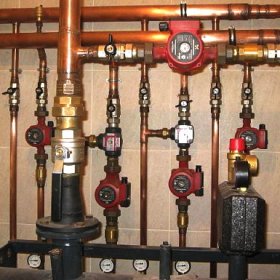
When installing the heating system, several pressure gauges are inserted into the pipeline. Using these measuring instruments, the operating pressure in the heating system is monitored. In the case of fixing deviations from the normalized values, measures are taken to eliminate the causes that caused changes in the system. Critical is a drop in pressure level of 0.02 MPa. In any case, it is impossible to ignore the pressure drops in the heating system, as this negatively affects the efficiency of heating the room, the operation of the installed equipment and the duration of its operation. In preparation for the new heating season, crimping workduring which excess pressure is created in the system to identify “weak” areas and to repair them in advance. The system tested in this way allows you to be sure that all its elements are able to withstand the hydraulic shocks that occur in the heating system.
What pressure value is considered normal?
The pressure in a stand-alone heating system of a private house should be 1.5-2 atmospheres. In houses connected to a centralized heating network, this value depends on the number of storeys of the object. In low-rise buildings, the pressure in the heating system is in the range of 2-4 atmospheres. In nine-story buildings, this figure is 5-7 atmospheres. For heating systems of high-rise buildings, the optimal pressure value is considered to be 7-10 atmospheres. In a heating main running underground from a thermal power plant to heat consumption points, a heat carrier is supplied at a pressure of 12 atm.
To reduce the pressure of hot water on the lower floors of apartment buildings, pressure regulators are used. Increase pressure coolant on the upper floors allows pumping equipment.
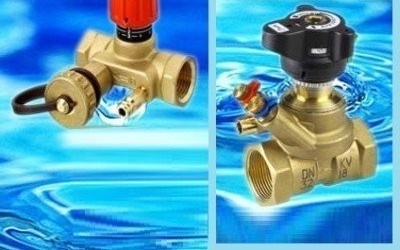
A manual balancing valve (regulator) equipped with needle-type measuring nipples allows you to control the pressure drop in the heating system
Effect of coolant temperature
After completing the installation of heating equipment in a private house, they begin to pump coolant into the system. At the same time, the minimum possible pressure equal to 1.5 atm is created in the network. This value will increase during the heating of the coolant, since in accordance with the laws of physics, it expands. By changing the temperature of the coolant, you can adjust the pressure in the heating system.
It is possible to automate the control of the working pressure in the heating system by installing expansion tanks that do not allow an excessive increase in pressure. These devices are included in the work when a pressure level of 2 atm is reached. There is a selection of excess warmed up coolant expansion tanks, so that the pressure is kept at the right level. It may happen that the capacity of the expansion tank is not enough to collect excess water.In this case, the pressure in the system approaches the critical level at the level of 3 atm. The situation is saved by a safety valve that allows you to keep the heating system intact by freeing it from excess coolant volume.
At natural circulation coolant creates a static pressure in the heating system, which is measured by 1 atmosphere for every 10 meters of the height of the water column. During installation circulation pumps a dynamic pressure value is added to the static indicator, showing the force with which the force-moving coolant presses on the walls of the pipeline. The maximum pressure in the autonomous heating system is set taking into account the characteristics of the heating equipment used during installation. For example, when choosing cast-iron batteries, it should be taken into account that they are designed for operation at a pressure not exceeding 0.6 MPa.

Insertion points of pressure gauges into the heating system: before and after the boiler, circulation pump, regulator, filters, dirt collectors, as well as at the outlet of heating networks from the boiler room and at their entrance to houses
Causes of rise and fall of pressure in the system
One of the most common causes of pressure drops in the heating system is the occurrence of a coolant leak. The “weak” links are most often the joints of the individual parts. Although the pipes can break, if they are already very worn or defective. The presence of a leak in the pipeline is indicated by a drop in the level of static pressure, measured with the circulation pumps turned off.
If the static pressure is normal, then the malfunction must be sought in the pumps themselves. To facilitate the search for leaks, it is necessary to turn off the various sections in turn, monitoring the pressure level. Having identified the damaged area, it is cut off from the system, repaired, sealing all joints and replacing parts with visible defects.
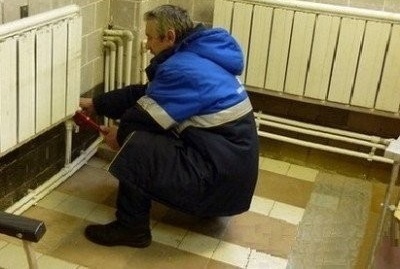
Elimination of visible coolant leaks after they are detected during the inspection of the heating system of a private house or apartment
If the coolant pressure drops, and the leak cannot be found, then specialists are called. Using professional equipment, experienced craftsmen pump air into the system, previously freed from water, as well as cut off from the boiler and radiators. Through the whistling air escaping through microcracks and weakened joints, leaks are easily detected. If the pressure loss in the heating system is not confirmed, then proceed to check the health of the boiler equipment.
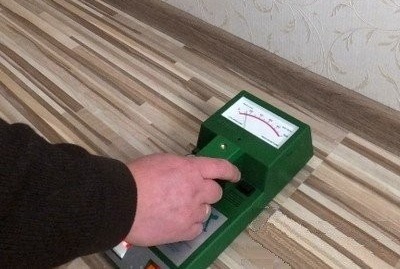
Using professional equipment to find hidden leaks. Excessive moisture detection scanner allows you to accurately determine the crack in the pipe
The reasons leading to a decrease in pressure in the system due to malfunctioning boiler equipment include:
- accumulation of scale in the heat exchanger (typical for areas with hard tap water);
- the appearance of microcracks in the heat exchanger caused by physical deterioration of equipment, preventive flushing, factory defects;
- destruction of the bithermic heat exchanger that occurred during water hammer;
- damage to the chamber of the expansion tank of the boiler.
In each case, the problem is solved in different ways. Water hardness is reduced with the help of special additives. A damaged heat exchanger is sealed or replaced. The tank built into the boiler is drowned out, replacing it with an external device having suitable parameters. Boiler service A qualified engineer must be involved.
The reasons for the increase in pressure in the system:
- coolant flow stopped along the circuit (check heating controller);
- constant replenishment of the system that occurs due to a person’s fault or as a result of a failure of automation
- overlapping of the tap or valve in the direction of flow of the coolant;
- education air plug;
- clogged filter or sump.
Having launched the heating system, do not wait for the instant normalization of the pressure level. Within a few days, air will flow out of the coolant pumped into the system through automatic air vents or faucets mounted on radiators. It is possible to restore the coolant pressure by its additional injection into the system. If this process is delayed for several weeks, then the reason for the pressure drop lies in the incorrectly calculated volume of the expansion tank or the presence of leaks.
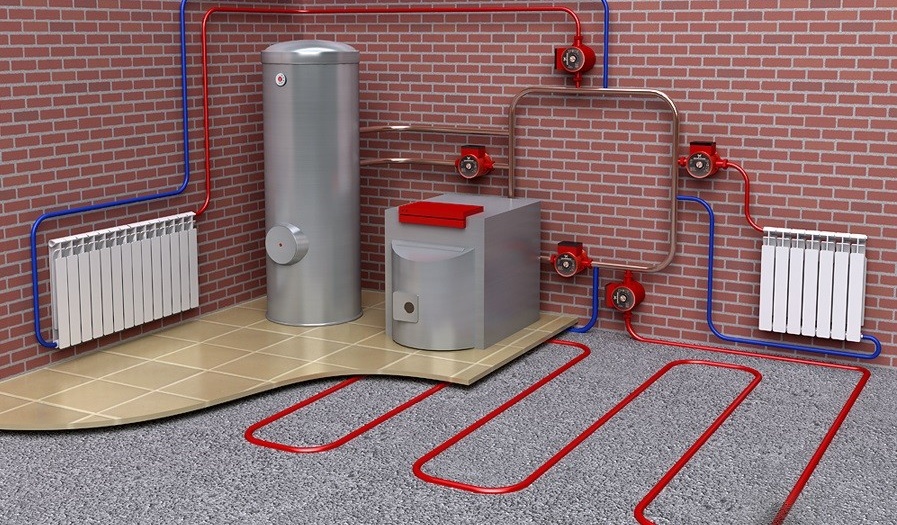


1 comment